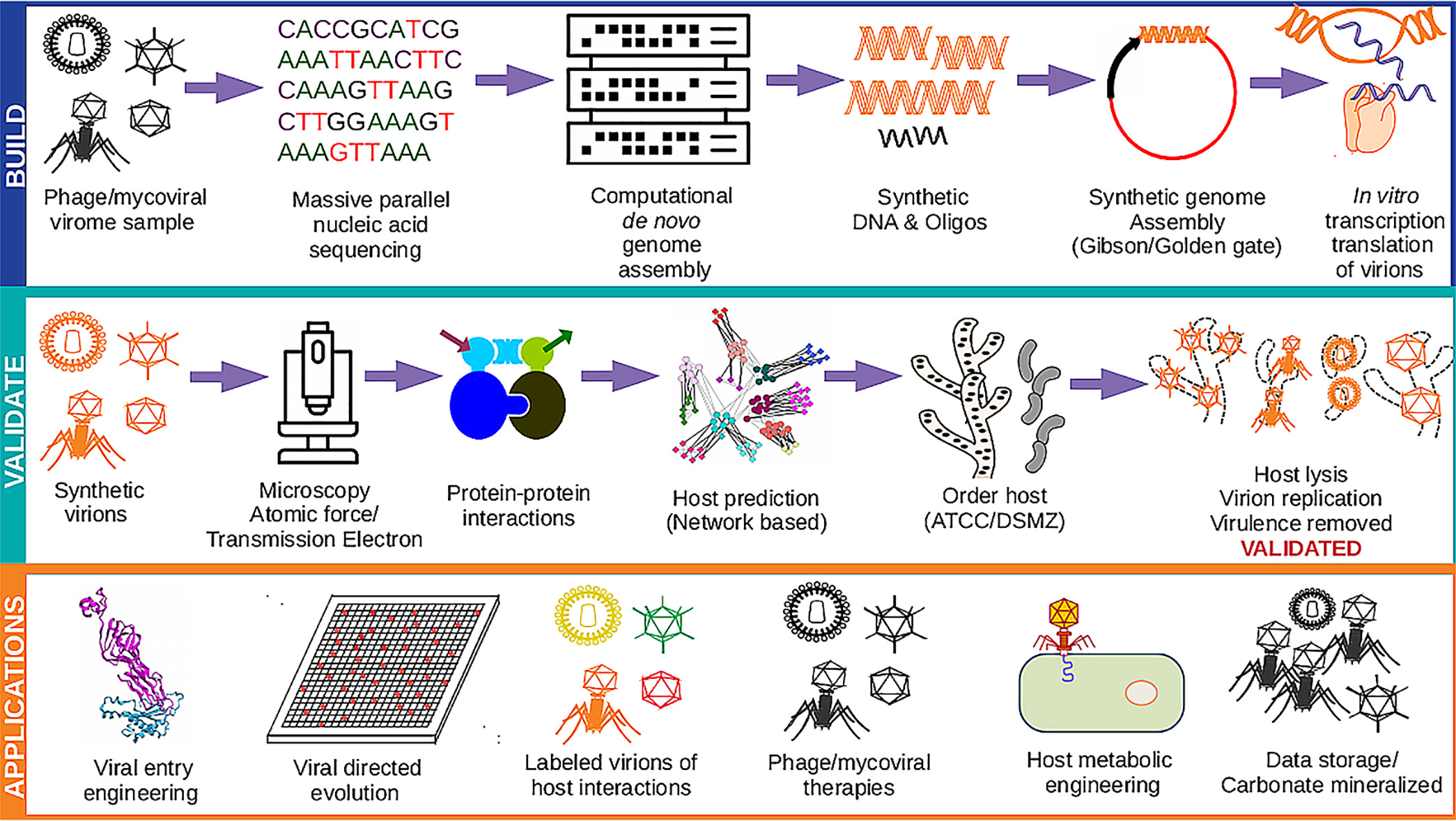SYNTHETIC VIROLOGY

Synthetic virology is a subdiscipline of virology that applies molecular, computational, and synthetic biology principles from the fundamentals obtained from naturally occurring viruses to engineer viruses. The first virus assembled from synthetic oligonucleotides was poliovirus , followed by the phiX174 bacteriophage (i.e., phage). Synthetic viruses are built upon a previously sequenced genome, and then oligonucleotides are ordered and assembled synthetically (e.g., Gibson). Synthetic virions should be evaluated morphologically using transmission electron microscopy (TEM) or atomic force microscopy (AFM) to ensure viral genome packaging within particles (i.e., complete virion assembly) before host validation as a quality control step. Computational tools can predict hosts of various viruses via a variety of methods. If the host is available, an infection could be confirmed from a synthetic virus. If successful, it would enable a user to construct model systems directly from sequencing data.